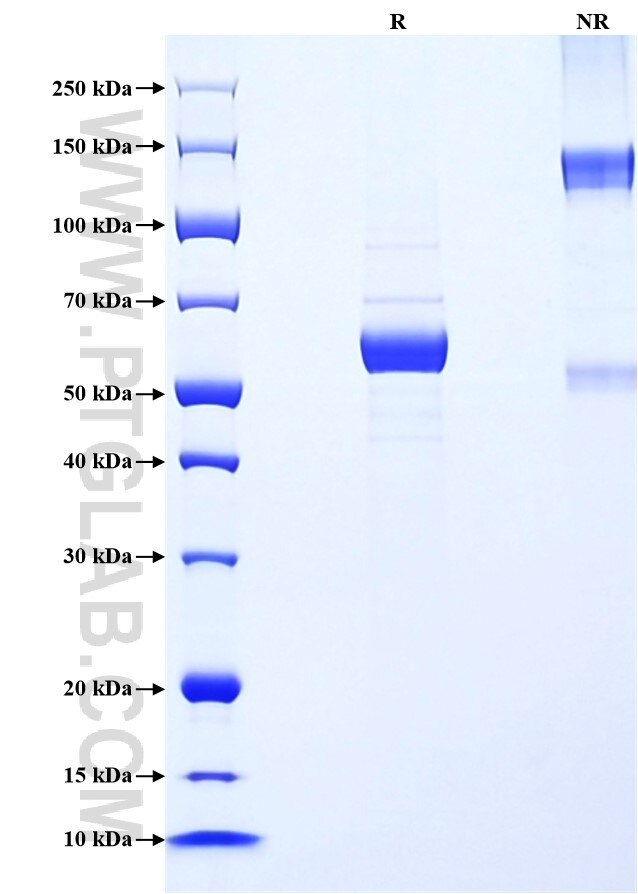Recombinant Mouse Epor protein (rFc Tag)
Species
Mouse
Purity
>90 %, SDS-PAGE
Tag
rFc Tag
Activity
not tested
Cat no : Eg2711
Validation Data Gallery
Product Information
| Purity | >90 %, SDS-PAGE |
| Endotoxin | <0.1 EU/μg protein, LAL method |
| Activity |
Not tested |
| Expression | HEK293-derived Mouse Epor protein Ala25-Pro249 (Accession# P14753-1) with a rabbit IgG Fc tag at the C-terminus. |
| GeneID | 13857 |
| Accession | P14753-1 |
| PredictedSize | 50.7 kDa |
| SDS-PAGE | 55-65 kDa, reducing (R) conditions |
| Formulation | Lyophilized from 0.22 μm filtered solution in PBS, pH 7.4. Normally 5% trehalose and 5% mannitol are added as protectants before lyophilization. |
| Reconstitution | Briefly centrifuge the tube before opening. Reconstitute at 0.1-0.5 mg/mL in sterile water. |
| Storage Conditions |
It is recommended that the protein be aliquoted for optimal storage. Avoid repeated freeze-thaw cycles.
|
| Shipping | The product is shipped at ambient temperature. Upon receipt, store it immediately at the recommended temperature. |
Background
Erythropoietin (EPO) receptor (EPOR) is a glycoprotein that belongs to the type I superfamily of single-transmembrane cytokine receptors. It consists of an extracellular domain that binds to the EPO ligand, transmembrane, and intracellular domains. The interaction of EPO and EPOR triggers the activation of several signaling pathways that induce erythropoiesis, including JAK2/STAT5, PI3K/AKT, and MAPK. EPOR is present in erythroid progenitor cells and has also been detected in various non-hematopoietic cells.
References:
1. Ribatti D. et al. (2012). Int Rev Cell Mol Biol. 299:199-234. 2.Tóthová Z. et al. (2021). Int J Mol Sci. 22(13):7109. 3.Awida Z. et al. (2022). Int J Mol Sci. 23(19):12051.
